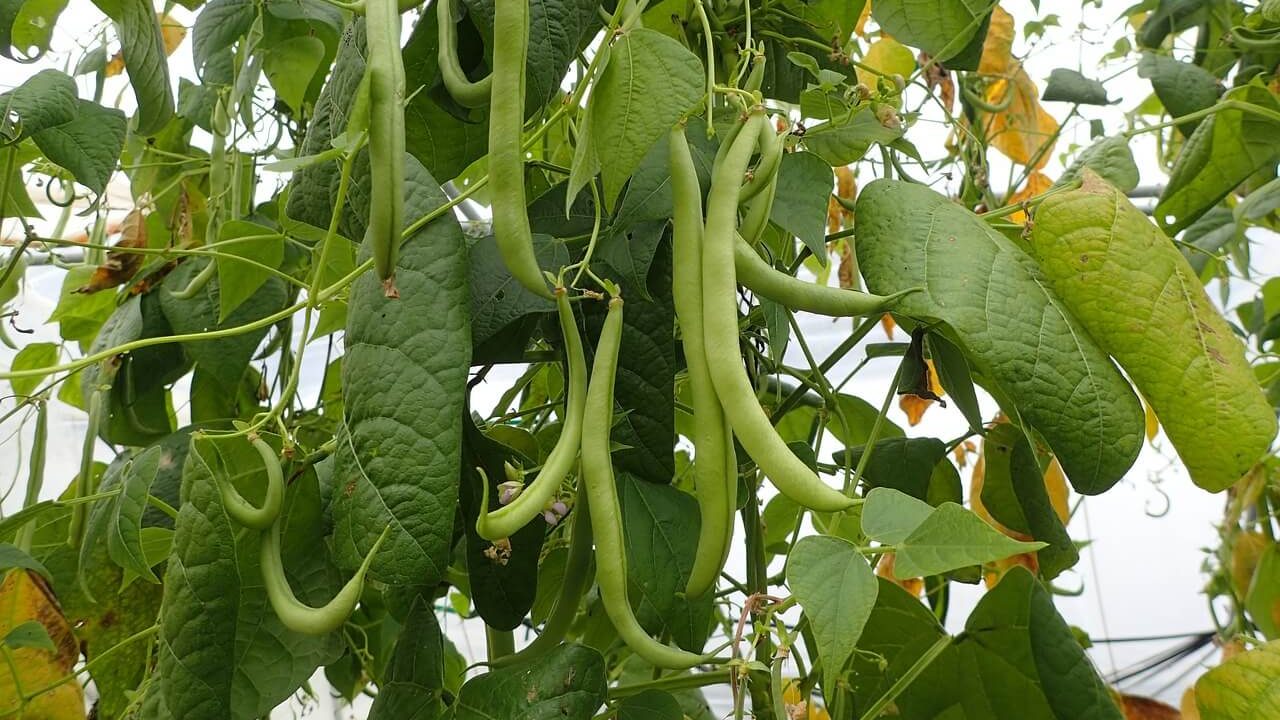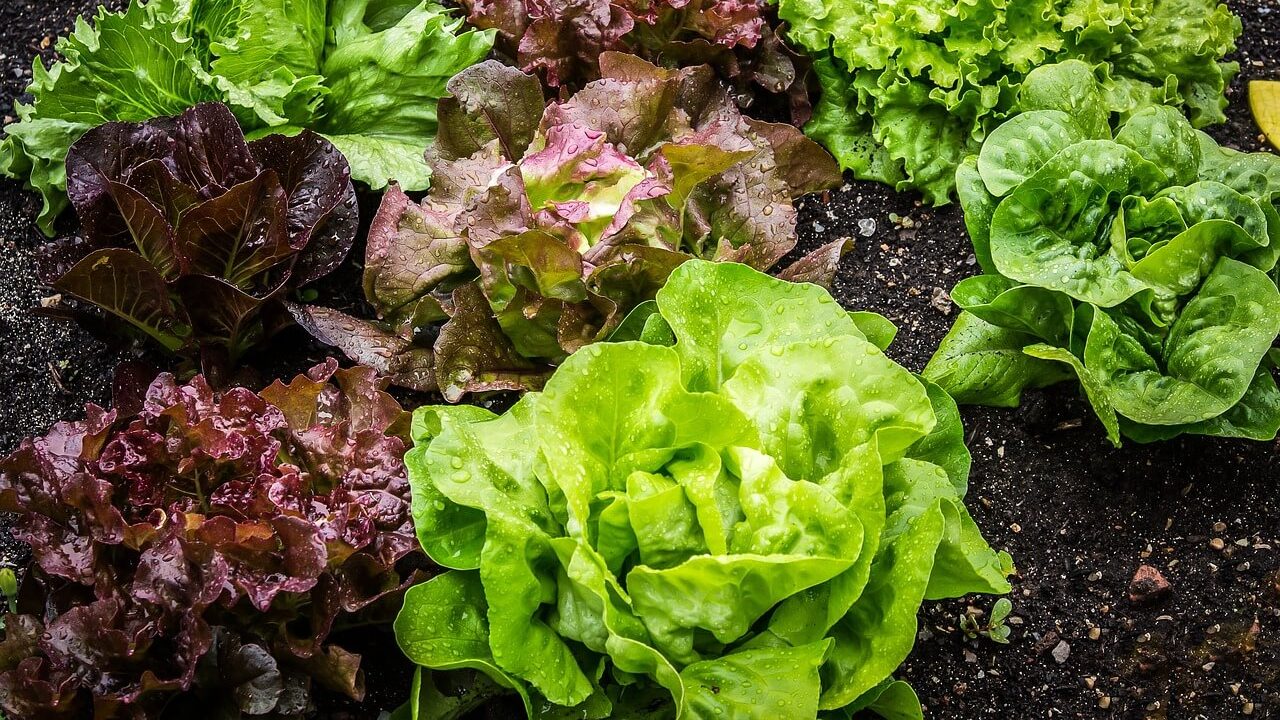10 Easy to Grow Vegetables for Beginners
Are you determined to try your hand at vegetable gardening but aren’t sure about which vegetables are the best to start as a beginner?
Look at this list of 10 easy-to-grow veggies and give some or all of them a try in your garden!

1. Tomatoes come in thousands of varieties and are the second most popular vegetable grown. Their seeds germinate quickly, and they are reliable growers which helps them adapt to various climates and hardiness zones.
When deciding on varieties, there are choices such as determinate (fruit all at once) vs. indeterminate (fruit throughout growing season), open-pollinated (naturally pollinated plants that produce similar traits to parent plants) vs. hybrid (controlled crossbreeding to produce desired traits that vary from parent plants), harvest time, flavor, size, shape, and color.

2. Zucchini is a low maintenance fast growing vegetable that grows well in multiple hardiness zones. They are hardy and can grow in many different types of soil which makes them a good choice for new gardeners. They are prolific producers, can tolerate some variation in watering, and have no real pruning needs except to remove occasional the dead or diseased leaves.
It is a versatile vegetable and can be used in a wide range of recipes. My favorite is zucchini bread, but it is also good cut into noodles, stuffed, grilled, sautéed, and baked. It can be added to lasagna, soups, quesadillas, and any number of both sweet and savory dishes.

3. Green beans are known to be easy to cultivate, hardy, and able to thrive in various climates and soil types. They are less prone to pests and diseases compared to some other vegetables and germinate relatively quickly. They are adaptable to small spaces such as containers or can be planted in larger gardens for increased production and a larger yield.
Like tomatoes, green beans come in several varieties, each with unique characteristics. Bush beans are compact, don’t require support and are good for small gardens and containers. Pole beans are my favorite because they produce for a longer period compared to bush beans. They are climbing plants and will need to be supported. Stringless beans are a modern variety that are tender and don’t have the fibrous “string” running along the pod’s seam. Shell beans mature fully and only the inner beans are used.

4. Radishes are satisfying for beginners because of their quick turnaround from seed to harvest. Their sprouts begin to appear within 3-7 days and many varieties can be harvested within 20-30 days of sowing, making them one of the fastest growing vegetables. Harvest them when they are small and most tender, and resow seeds to extend the harvest.
In addition to growing quickly, radishes are incredibly versatile in the kitchen. They add a crisp and peppery bite to salads when thinly sliced and tossed with lettuce, cucumbers, and other fresh vegetables. They are visually appealing as garnishes thanks to their vibrant colors and appealing shapes. Some varieties, like the daikon radish, are excellent for pickling and can then be added to sandwiches and Asian dishes. They can also be sauteed or roasted to mellow their flavor and bring out their natural sweetness.

5. Kale is a hardy and robust plant and is more forgiving of beginner mistakes like irregular watering or minor pest issues. It requires relatively little maintenance and has a longer growing season than many other leafy greens. Gardeners may choose from a variety of flavors, textures, and colors when adding it to their garden.
Kale is considered a nutritional powerhouse because of the wide range of essential vitamins and minerals it contains. To enjoy it, add it to salads, smoothies, soups, and stews, sauté or stir fry it, add it to pasta and pizzas, or bake it into kale chips. If the bitterness of kale is off-putting, eat young kale leaves, massage leaves with olive oil and salt, blanch, steam, sauté, or stir fry it, or combine it with other ingredients to introduce complimentary flavors that help balance the bitterness.

6. Lettuce is often recommended as a great starting point for novice gardeners because it’s so easy to grow. It’s ready for harvest in 30-60 days, can be grown in containers and small spaces, has many varieties from which to choose, requires relatively minimal maintenance, and with successive planting can be enjoyed throughout the growing season. It prefers cooler temperatures and can be grown in both spring and fall, but not in the heat of summer in warmer climates.
The benefits of home-grown compared to store bought include superior freshness and variety. Growing your own can be cost effective, especially if you use succession planting. You have control over pesticides and can choose organic or natural pest control methods. And, since vitamins and minerals can degrade over time, lettuce fresh from your garden typically contains more vitamins and minerals than less fresh purchased in stores.

7. Spinach is another nutritional powerhouse and due in part to its quick growth, is a good choice for beginners. It is a cool season crop and can tolerate some frost, so plant it in the early spring and late fall for multiple harvests. It can be grown in all gardens, including small beds and containers, and needs well-drained soil, regular watering, and some fertilizer.
Although Popeye eats it straight out of the can, spinach is easily added to a variety of foods to boost the nutritional value. Most commonly raw leaves are added to all types of salads, omelets, and even quesadillas. It can be stuffed into a chicken breast along with feta cheese and baked, or made into a dip with artichoke hearts and cream cheese. However you choose to eat it, spinach contributes to a healthier and more delicious diet.

8. Carrots are straightforward to grow making them an easy choice for beginners. They are versatile and can be grown in garden beds, raised beds, and containers. Since a small area can yield a substantial crop, beginners can have an ample harvest without a large investment in real estate. Compared to some other vegetables they are generally pest resistant and don’t require much fuss. They do thrive in cooler weather so plant them in the spring and fall seasons.
Like other root vegetables, there are many creative ways to enjoy them in your food. The main carrot roots can be added to soups and salads, and the green tops can be chopped and mixed into pesto. They can be cut into strips and baked as an alternative to french fries or roasted until caramelized and tender. They can also be pickled or grated and mixed into muffins and cakes for a sweet treat.


9. Pepper plants are adaptable and thrive in most climates as long as they receive enough sunlight and are kept warm. Like the other vegetables on this list, they require minimal care and are relatively disease and pest resistant compared to some other vegetables and can produce a generous harvest. Choices for various colors and heat levels allow you to choose varieties to suit your taste and culinary needs.
The two most common types of peppers are bell peppers and chili peppers. Bell peppers tend to be bell shaped, have thick walls, and come in various colors (green, red, yellow, and orange) depending on their ripeness. They have a mild, sweet flavor and are excellent additions to salads, stir fries, or eaten raw. Chili peppers vary in size, shape, and color, but are generally smaller and narrower than bell peppers and, because they range in flavor from mild to extremely spicy, are often used to add heat and flavor to dishes. Varieties like jalapenos are moderately spicy, while habaneros and ghost peppers are extremely hot. Other common varieties are serrano and cayenne peppers.

10. Cucumbers round out this list because they are simplistic to grow. Germinating in 7-10 days, they require minimal care and are less susceptible to pests and diseases. They too can be adapted to various size gardens, including ground level and raised beds, containers, and along trellises. They tend to produce a substantial amount and are best when harvested young and tender.
For successful cultivation they need to be planted after the last frost in a sunny spot with well-drained soil. They like consistent moisture but do not do well when waterlogged. Provide support for their vines and fertilize with a balanced, all-purpose fertilizer when planted and again when the vines start producing flowers and fruit. Attract bees and other pollinators to your garden to ensure successful fruit development.
For those just starting their gardening journey, these 10 vegetables will give the most opportunity for success. From the simplicity of growing tomatoes and zucchini to the rewarding experience of cultivating peppers and cucumbers, there’s something for every beginning gardener to enjoy. Remember, patience and care are key, but with these vegetables, you can reap a bountiful harvest and gain knowledge and confidence in your gardening abilities.







10 Comments
Comments are closed.